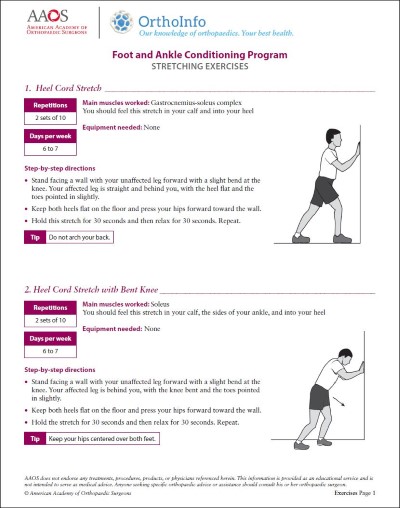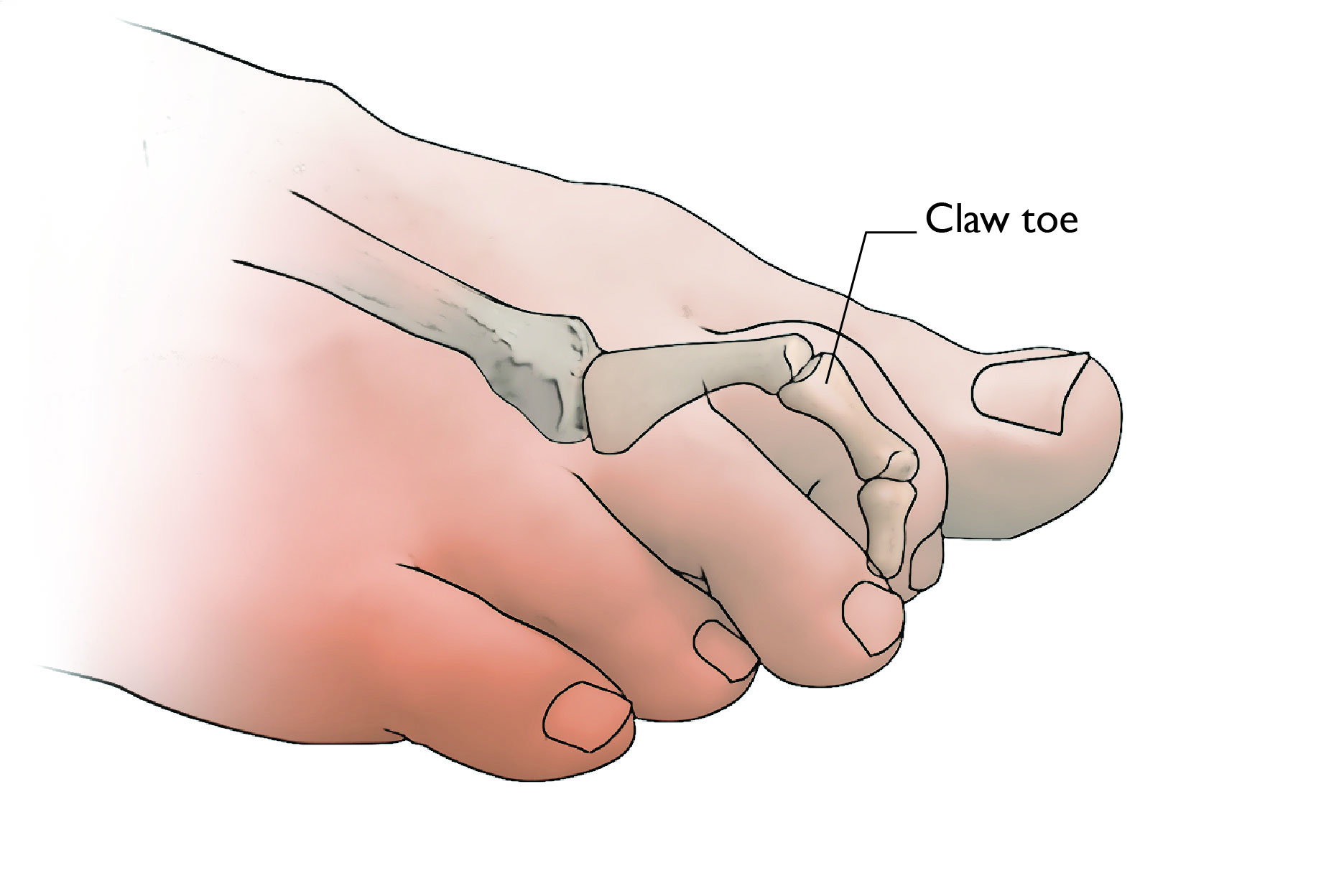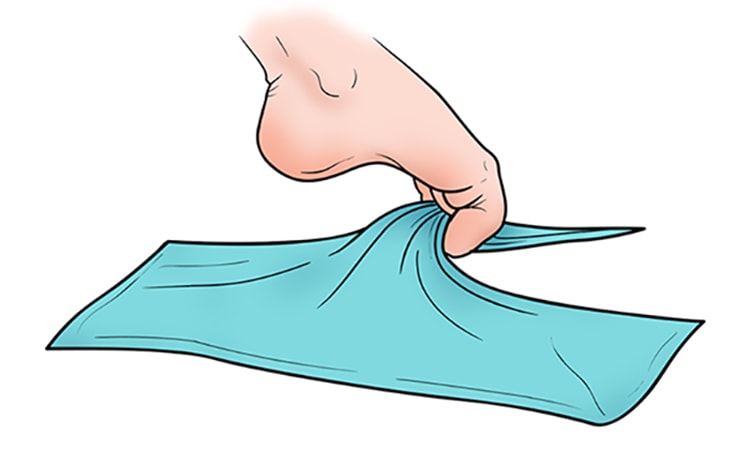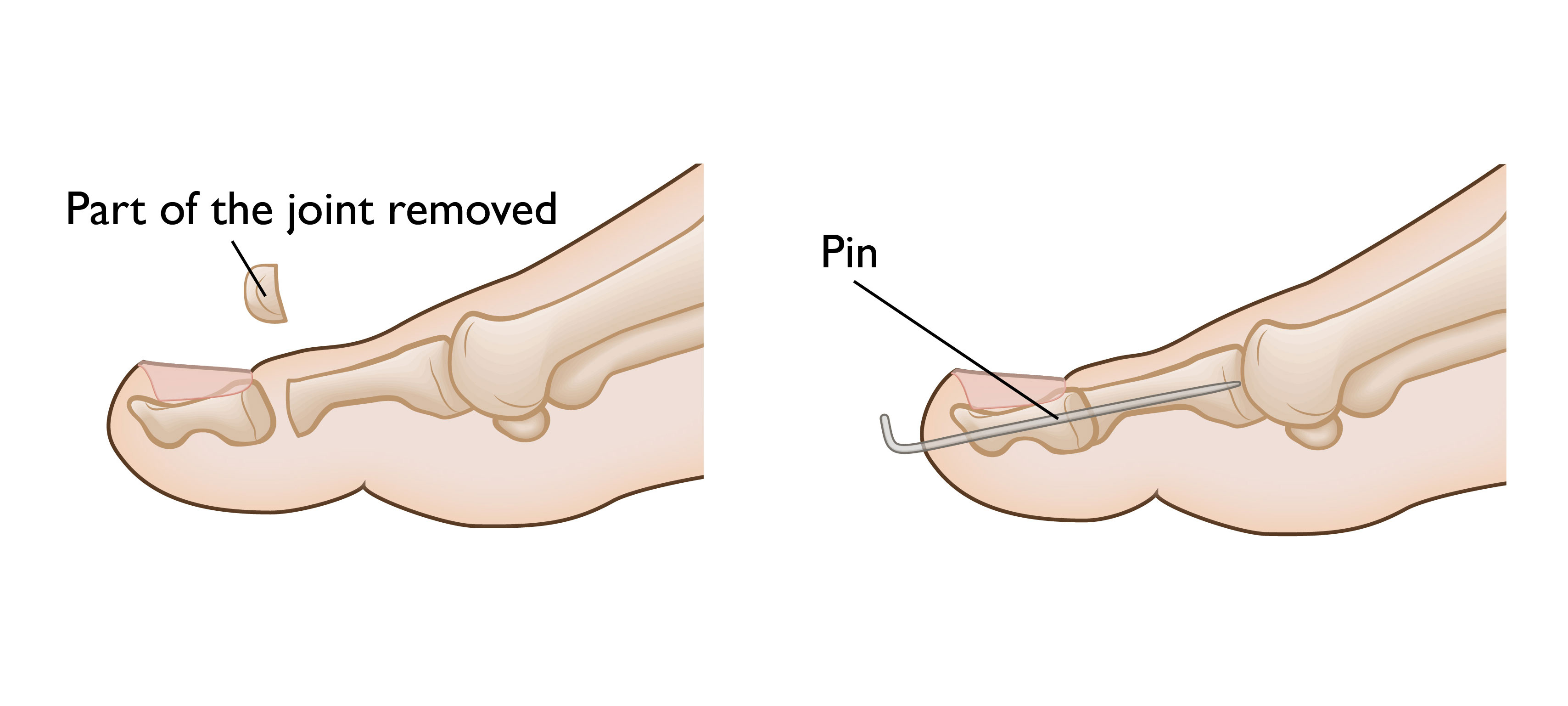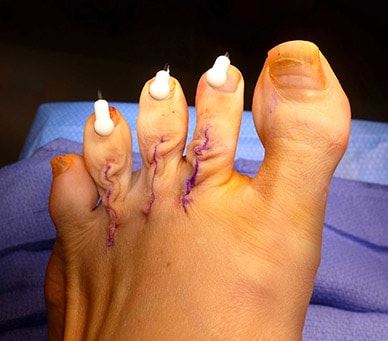Diseases & Conditions
Claw Toe
Claw toe is a common foot deformity. Having claw toe means your toes "claw," or curl, digging down into the soles of your shoes and creating painful calluses. Claw toe gets worse without treatment and may become a permanent deformity over time.
Anatomy
The forefoot is made up of five toes. Each toe has three joints — except for the first (big) toe, which usually has only two joints.
In claw toe, the affected toe is bent at the middle joint, which is called the proximal interphalangeal (PIP) joint, and at the last joint, which is called the distal interphalangeal joint (DIP).
Cause
- People often blame claw toe on wearing shoes that squeeze your toes, such as shoes that are too short in length or high heels.
- However, claw toe also is often the result of nerve damage caused by diseases like diabetes, stroke, or alcoholism, which can weaken the muscles in your foot.
- Trauma and inflammation can also cause claw toe deformity.
Symptoms
- Your toes are bent upward (extension) from the joints at the ball of the foot.
- Your toes are bent downward (flexion) at the middle joints toward the sole of your shoe.
- Sometimes your toes also bend downward at the top joints, curling under the foot.
- Corns may develop over the top of the toe or under the ball of the foot.
Doctor Examination
If you have symptoms of a claw toe, see your doctor for evaluation. You may need certain tests to rule out neurological disorders that can weaken your foot muscles, creating imbalances that bend your toes. Trauma and inflammation can also cause claw toe deformity. Often, understanding the underlying cause will affect treatment options.
It is important for your doctor to determine if the clawing is flexible or more rigid. Claw toe deformities are usually flexible in the early stages, but they stiffen into place over time.
Assessing your skin for callus or breakdown can also influence how the toes should be treated.
Treatment
If you have claw toe in early stages, your doctor may recommend a splint or tape to hold your toes in correct position. Additional advice:
- Wear shoes with soft, roomy toe boxes (the part of the shoe that covers and protects your toes) and avoid tight shoes and high heels.
- Use your hands to stretch your toes and toe joints toward their normal positions.
- Exercise your toes:
- Use them to pick marbles up off of the floor.
- Perform towel curls. Place a towel flat under your foot and use your toes to curl (scrunch) it.
If you have claw toe in later stages and your toes are more rigid (fixed in position):
- A special pad can redistribute your weight and relieve pressure on the ball of your foot.
- Try special "in-depth" shoes that have an extra 3/8" of depth in the toe box.
- Ask a shoe repair shop to stretch a small pocket in the toe box to accommodate (make room for) the deformity.
If these treatments do not help, you may need surgery.
Surgical Treatment
If the claw toe is flexible, sometimes your surgeon will recommend cutting the tendon on the underside of the toe to help cure or prevent sores on the tip of the toe.
When the claw toe is rigid, the surgeon often lengthens or cuts the tendons in combination with shortening one of the bones in the toe or fusing the middle toe joint (arthrodesis). The surgeon will often place a pin in the toe for 4 to 6 weeks to hold the bones in place during healing.
After surgery, you may experience some stiffness, swelling and redness in your toe for up to 4 to 6 weeks.
During recovery, you may be able to bear weight on your heel for short distances, but extended walking is usually. Elevating your foot as much as possible will help speed up healing and reduce pain.
Once healed, your toe may be slightly longer or shorter than it was before and will not be able to bend at the fused joint.
Contributed and/or Updated by
Peer-Reviewed by
AAOS does not endorse any treatments, procedures, products, or physicians referenced herein. This information is provided as an educational service and is not intended to serve as medical advice. Anyone seeking specific orthopaedic advice or assistance should consult his or her orthopaedic surgeon, or locate one in your area through the AAOS Find an Orthopaedist program on this website.







